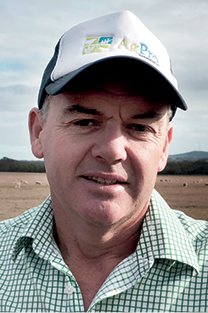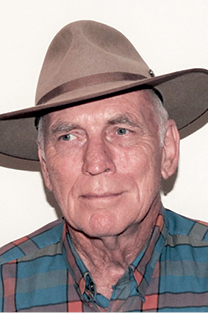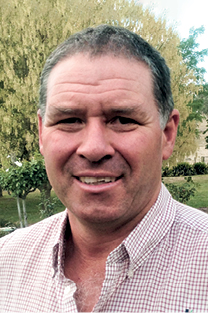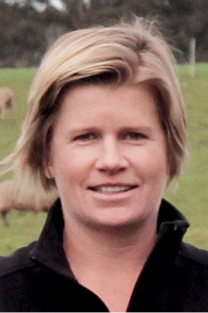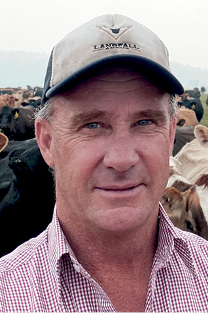Autumn actions around the country
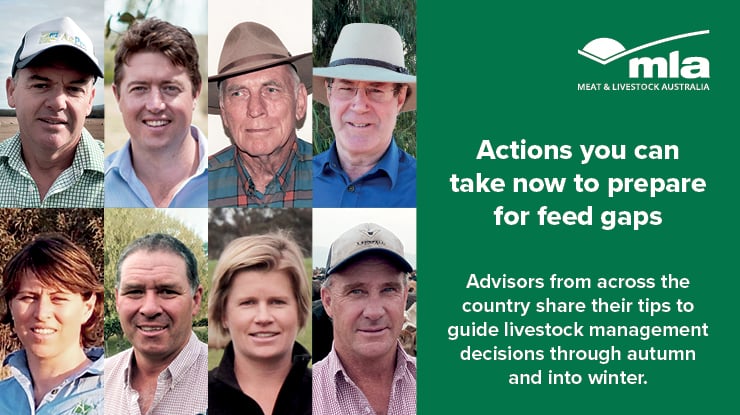
On the back of another hot, dry summer across much of Australia, producers need to prepare for late autumn and winter feed gaps.
Here, advisors from all over the country share their tips to guide livestock management decisions through autumn and into winter.
In the west, our seasonal break is generally early May, so consider:
1. Your exit strategy for the season. Ask yourself these questions:
- How much groundcover/water/feed will I have come late April?
- How can I grow more feed when it does rain?
- Can I keep water up to the cattle/sheep?
- How late can I sell cows-in-calf, and what sheep can I sell?
- What's the stocking rate potential and how's it going to be adjusted?
2. Using containment paddocks to defer grazing pastures and manage erosion.
3. Developing a feed and water budget. Set dates for when you will purchase grain. Do you have time to cart water (be realistic)? If lambing early, do ewes have access to dams or troughs?
"Don't do it on your own. Call a professional, join a producer discussion group or talk to a farming friend or neighbour."
MLA's calculators to evaluate stocking rate, feed requirements and animal health: mla.com.au/tools
Useful apps for your smartphone:
1. Condition Scoring of Sheep (Western Australian Agriculture Authority)
2. Lambing Planner (Western Australian Agriculture Authority)
3. Drought Feed Calculator (NSW DPI)
Farm business and livestock consultant, Meridian Agriculture, south-west Victoria
1. Develop supplementary feeding programs for weaners and adult cattle.
2. Consider higher rates of feed and higher quality feeds for young cattle to lift weight gain efficiency.
3. Determine appropriate rations to achieve condition score targets in breeders and reduce risk of metabolic disorders such as grass tetany.
4. If pasture is no longer providing a significant contribution to daily nutritional requirements, use containment areas.
5. The decision of when to return stock to pastures should be influenced by:
- autumn rain events and pasture growth
- ability to meet winter pasture targets (determined by feed budgeting forecasts)
- time of lambing
- methods used to transition animals back to pasture diet.
"Irrespective of containment decisions, appropriate supplementary feeding of breeding ewes during late winter and early autumn is critical.
The true cost of inadequate nutrition during pregnancy can be very large and the need to determine appropriate feeding levels for varying situations cannot be overstated."
Lifetime Ewe Management: lifetimewool.com.au/LTEM.aspx
Pasture budgeting tools: evergraze.com.au
More Beef from Pastures: mbfp.mla.com.au
1. Monitor sale prices and do a feed budget. Prepare to sell turn-off cattle if feed quality is deteriorating. Perform faecal NIRS on dung samples if unsure of diet quality. Establish the best time to join based on the 'green date', annual pasture availability curve or markets.
2. Heifers: Conduct foetal ageing and retain those which conceived in the first 42 days of joining, after selecting on temperament.
3. Main breeders: Conduct foetal ageing and identify early and empty breeders. Prepare breeders that aren't pregnant for sale. If feed supply is short or there are surplus breeders, prepare breeders that have conceived late in the season for sale. Adjust stocking rate according to long-term carrying capacity goals.
4. Use an accredited vet/tester for foetal ageing - it's the best tool to manage reproduction.
5. Assess disease risk (leptospirosis and pestivirus) and vaccinate if required.
6. Prepare to wean. Continue to reduce breeder numbers in response to anticipated feed shortages. Ensure breeders are at least in condition score 2.5 to maximise re-conception rates after next calving.
"A rational decision-making approach assesses all essential data. It may not always be the right decision, but it was the correct choice at the time based on the best information available."
EDGE courses (Grazing Land Management, Breeding and Nutrition): mla.com.au/edge
Feed budget calculator: mla.com.au/feedbudget
Condition scoring: mbfp.mla.com.au (Module 5)
MLA Tips and Tools on reproductive performance: mla.com.au/reproductiveperformance
Purchase bulls using Breedplan EBVs for reproduction: genetics.mla.com.au
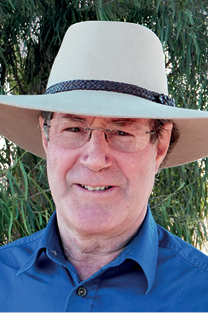 |
Col PatonDirector, EcoRich Grazing, southern Queensland |
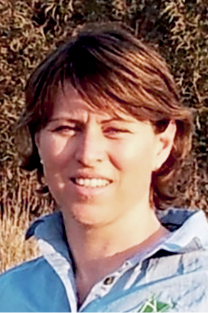 |
Jill AlexanderDirector, Applied Ag, southern Queensland |
1. Pastures are fragile after poor growing seasons and late starts over the past few years - they'll need careful management over several seasons to avoid continued decline and to allow recovery.
2. Establish the current land condition of all paddocks and monitor closely.
3. Achieve recovery by resting pastures from grazing for all or part of the growing season. Ensure high-value sown pastures and those in reasonable condition are allowed to set seed before grazing.
4. Paddocks in very poor condition may need to be used as sacrifice paddocks while others recover.
5. Use forage budgets now to determine stock numbers that can be carried from April through to the 'production point' next growing season, which is 3-6 weeks after the start of the season. Do a mid-dry season forage budget to check you're on-track and stock are in satisfactory condition.
6. Where there's pasture remaining, consider feeding a high-energy supplement to reduce grazing pressure and extend grazing times.
7. Wean early and sell or agist older and larger cattle; cull non-pregnant breeders.
8. Many producers have downsized their herds recently, so only core stock numbers remain on many properties. Restocking with too many too early could result in irreversible damage to pastures and compromise future carrying capacity.
EDGE courses (Grazing Land Management, Grazing Fundamentals, Breeding and Nutrition): mla.com.au/edge
Feed budget calculator: mla.com.au/feedbudget
MLA's Profitable Grazing Systems: mla.com.au/pgs
"As an agronomist I focus on my livestock clients' key asset: their pasture base. Key to managing the pasture base is understanding the pasture growth curve."
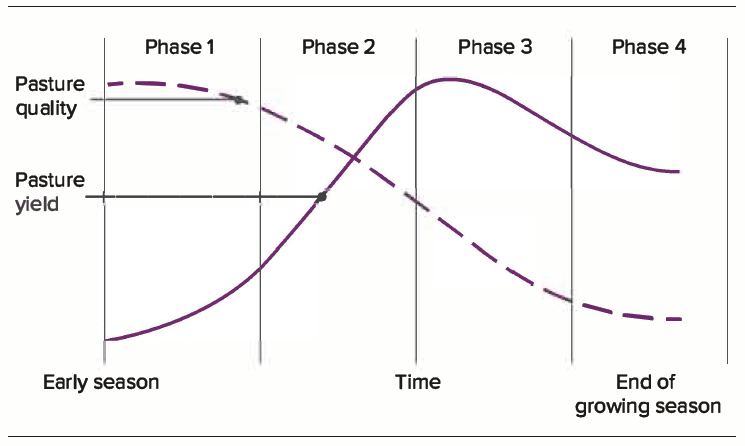
1. Pick your grazing time: If perennial grasses have emerging green pick, avoid grazing before the plant reaches growth phase two. Grazing in phase one slows growth, limits overall pasture production and reduces plant persistence. Avoiding grazing until March/phase two, when it has enough 'solar panel' to absorb energy and really take off, will produce more pasture and healthier plants.
2. Be on the front foot:
- Extensive bare ground and brought-in hay and fodder can lead to a weed explosion, so put strategies in place to manage an increased weed burden.
- Monitor and address soil fertility through soil testing.
- Be aware of the risk of phalaris staggers, particularly if grazing reshooting phalaris.
3. Grazing crops: If the season allows, timely sowing of winter forage crops is a good option to produce available feed more quickly than a recovering perennial pasture and fill the feed gap.
4. No rain? Keep preserving your key asset. Know your best pasture paddocks and continue to stay off them. If feeding stock, use containment feeding or sacrifice paddocks.
Understanding pasture curves:
- MLA Grazing EDGE courses: mla.com.au/edge
- Pasture assessment courses: mla.com.au/pgs
1. For late autumn/early winter calving, monitor condition score of breeders through pregnancy, feed to target condition score 3.
2. Feed budget and ensure supplementary feed is available for late-pregnancy cows if there's a late seasonal break.
3. Set sales/growth targets for last season's calves.
4. Ensure adequate magnesium is available to breeding cows/ lactating stock over winter to avoid grass tetany issues.
5. Pregnant ewes: Manage nutrition through the autumn feed gap. Conduct supplementary and paddock feed budgets to meet energy requirements for ewes during mid/late-pregnancy. Monitor condition score in early/mid-pregnancy to ensure they can be at condition score 3+ prior to lambing.
6. If scanning, manage singles/twins and dry ewes effectively. Consider how many containment pens/paddocks are required for targeted nutrition.
7. Calculate a feed budget (using proper rations) to ensure ewes/cows are fed to a condition score target. Both supplementary and paddock feed need to be tested, primarily for protein and metabolisable energy (ME) content. Consider mineral lick ad lib if deficiencies are identified.
8. Prepare lambing paddocks even if stock are being fully supplementary fed in containment. Ewes need access to a small paddock with adequate shelter.
Condition scoring:
- Sheep: lifetimewool.com.au/conditionscore.aspx
- Cattle: mla.com.au (Module 5)
Pasture assessment courses: mla.com.au/pgs

